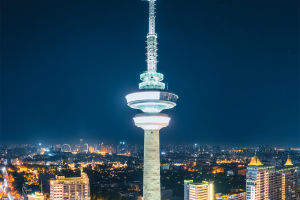Although the starry sky is beautiful, the stars are so weak that a photographer can't press the trigger and obtain a beautiful image of the starry sky.
If you are in a location surrounded by a lot of neon lights, industrial lighting, and other light sources, the starlight will become even dimmer and even harder to see with the human eye.
1. Equipment preparation
Camera body
Shooting starry skies requires a camera with excellent high sensitivity and a higher Signal-to-noise ratio.
Lenses
Shooting the stars requires a lens with an ultra-wide angle and large aperture. In terms of versatility, the 16-35mm f/2.8 and 14-24mm f/2.8 from various brands are great quality lenses for star photography.
Still, a 2.8 aperture is sometimes not enough, because the larger the aperture, the more light is fed in, allowing for shorter exposure times and lower ISOs, resulting in better image quality.
For different star subjects, fixed focal length lenses 24mm f/1.4, 35mm f/1.4, 40mm f/1.4, 50mm f/1.4, 85mm f/1.4 and other lenses with larger apertures are all good quality star lenses.
However, as the angle of view of a fixed focal length lens such as the 24mm f/1.4 is not wide enough, it requires multiple joins to complete and the joins are cumbersome, but the advantage is that the starry sky is captured with better image quality, especially at the edges, making it more suitable for large output.
Cometic Aberration
Aberrations are when a point source image is trailed like a Comet rather than a solid point, which is a nightmare for astrophotographers. This is related to the quality of the lenses.
Lighting system
For astrophotography, the quality of the ground is the key. The quality of light is also crucial, not only in terms of natural light but also in artificial light, which is an essential skill for astrophotography.
The photographer can choose the appropriate lighting system for the specific subject matter.
The Equatorometer
The Earth's rotation creates a slight shift, and the equatorial camera can rotate itself so that the camera remains in the same position relative to the stars, which greatly increases the time available for astrophotography and results in better-quality images.
However, because equatorial cameras are not portable and expensive, they can be purchased according to your specific needs.
Other important accessories
Other important tools include an L-shaped quick-release plate, a 720-degree panoramic head, a shutter cable, a GPS, several spare batteries, a rechargeable battery, and a long night, so remember to bring warm clothing and mosquito repellent.


